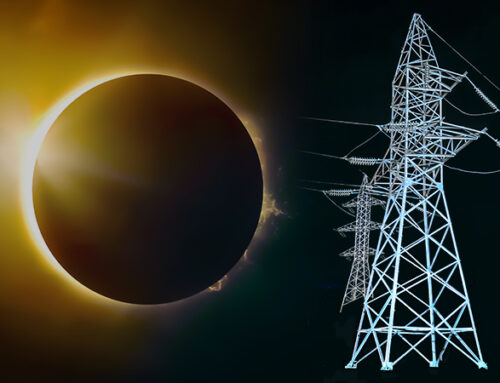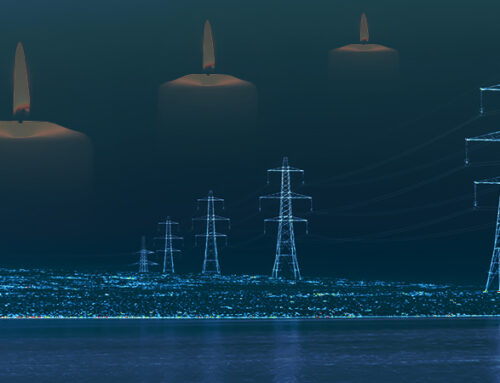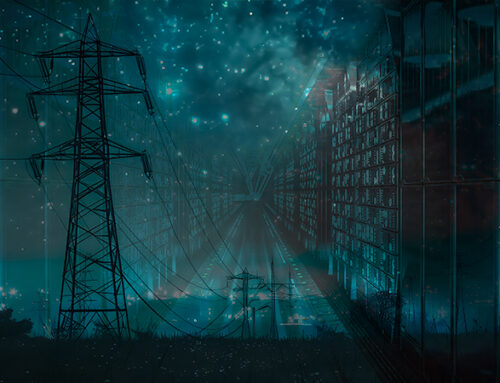The GB electricity market has become increasingly reliant on interconnection with other markets. In its 2023 Future Energy Scenarios , NG ESO said:
“To manage dunkelflaute periods, dispatchable thermal power plants (gas and/or hydrogen), depending on the scenario and year, are likely to be required. A combination of LDES (e.g. Compressed Air Energy Storage (CAES), Liquid Air Energy Storage (LAES), Pumped Hydro Storage (PHS)) and interconnectors will be required to manage the network during these periods.”
In other words, interconnectors are seen as key to managing periods of low wind output in an electricity system increasingly dependent on intermittent renewable generation.
But what if the markets at the other end of those interconnectors are also experiencing dunkelflaute conditions? As most of them (with the exception of Norway) share similar weather to the UK, and (with the exceptions of Norway and France) share similar wind-led de-carbonisation strategies, can we really rely on interconnectors to ensure security of supply? And what about the effects of energy nationalism which has been increasing since the war in Ukraine? Can we rely on countries being willing to export at all times when GB needs to import?
Cross-border electricity trading allows resources to be used more efficiently across wide regions, but they tend to increase prices in exporting countries while lowering prices in importing countries, which may be unpopular in countries which export more than they import (such as Norway). Britain is typically an importer, so is able to benefit from (slightly) reduced power prices, but analysis of historic interconnector behaviour indicates that quite often we import when we don’t need to and export when demand is high and imports would be preferable. In addition, the rules governing the behaviour of interconnectors do not guarantee they will import during times of electricity shortages – they could even export instead.
Some countries, in particular Norway, are expressing doubts about their commitment to trading electricity, and have passed laws allowing them to suspend exports under certain conditions. They are also considering imposing export taxes in order to prevent domestic prices rising too much, which may reduce the availability of exports. Other countries may take a similar stance if they face electricity shortages, but high weather correlation and many countries in northern Europe relying on wind power, means that several countries could face shortages at the same time and be unwilling to export.
There have also been well-publicised acts of sabotage against cross-border gas pipelines which leads to concerns over the security of all energy infrastructure.
All of this suggests that while interconnectors may benefit Britain under normal market conditions, they may not deliver at times they are needed the most, and that relying on them could be a risky strategy.
I have written a report: Interconnectors and their impact on the GB power market, which is currently out for peer review on the GWPF website here. I would welcome comments by the 13 May deadline.






A very good precis of the downsides to relying on interconnectors. Surely the sudden loss of Russian gas should have opened people’s eyes to the risks of energy supplies from other countries.
Offshore wind turbines and electrical infrastructure are also vulnerable to sabotage.
Hi I can’t find it on the website you mention – thanks
https://www.thegwpf.org/open-peer-review-interconnectors-and-their-impact-on-the-gb-power-market/
The link to the paper is in the sentence just under the date (copied here: https://www.thegwpf.org/content/uploads/2024/04/Porter-Interconnectors.pdf, but please send comments via the GWPF as they are collating everything)
And when Norway experiences drought and France can no longer maintain its aging Nuclear stations?
Exactly!
Working through the likely costs (per MWh) of providing the back up power needed to cover those periods when there is zero delivery from the interconnectors will be fun. Big number.
I fear that the proper role of interconnectors is load balancing – not displacing the UK’s net zero lunacy onto other countries.
I would be amused to watch someone trying to cut an energised HV cable…. God help them if they succeeded.
I am sure they won’t do it with a hand saw. A torpedo or timed explosive device will do it nicely at zero risk to the perpetrators. Many countries and organisations have the capability.
Drones could easily take out the offshore wind turbines.
In the world that is developing now we need as much infrastructure as possible on land.
1) I thought the original and sensible purpose of Interconnectors was to match supply and demand differences between two countries. For example, when the time difference between the UK and France means that the times for peak demand in the two countries differ. This assumes that the cost of the Interconnector (and its losses) is significantly less than the cost of having space capecity in each country; thus making the extra complexity worthwhile. As indicated in the paper, the UK use of Interconnectors seems to go way beyond this to try and accommodate a high proportion of wind and solar power generation.
2) Perhaps I am misunderstanding the situation, but isn’t there also an econpmic aspect in the UK relying on Interconnectors rather than having sufficient reliable generating capacity of its own ? For example, recently the UK has been importing close to 3 GW of electricity from France. Like other imports, this has to be paid for by another activity which produces income directly from France (or indirectly via some other country) otherwise does not the UK simply become poorer and poorer ?
The original French interconnector was simply to take advantage of cheap French nuclear power and avoid building our own: it opened as long ago as 1986. There is a 5.6GW nuclear complex at Gravelines just outside Dunkerque which is directly linked to the HVDC converter station at Coquelles near the Chunnel: it operated almost exclusively in import mode at close to full capacity (except when the lines were damaged by a trawler anchor when there were a number of months before repair, and later when fire damaged the converter station at Sellindge) until the French started having problems with the nuclear power stations. BritNed was built when Zac Goldsmith and Greenpeace chums prevented the building of a new coal fired power station at Kingsnorth. The UK converter station is where the power station would have been, and the Dutch one is right alongside MPP3, the coal fired power station the Dutch built to supply it: we offshored our coal power.
It has become a habit to build interconnectors rather than dispatchable power stations, yet effectively we have to pay for the interconnector and the power stations that feed it. Of course, there are also rising numbers of offshore links within Britain. The Western HVDC link from Hunterston in Scotland to Deeside in North Wales is designed to allow more wind generation in Scotland: it will tend to transmit at least some of the power from the adjoining nuclear station when it is running. It has been notorious for frequent failures putting it out of action for months at a time. Further offshore links are planned to try to deliver more wind power Southwards and reduce curtailment, though as wind capacity increases the curtailment problem will cease to be confined to Scotland, and any extra power from there would simply force more curtailment further South. Interconnectors are no solution when there is a Europe wide power glut.
“Hydro based technology with pumped storage and tidal basin exploitation are a solution that so far have been discarded. At times I have observed very low levels of support from nuclear and gas turbine technologies that are both steadily declining in availability.” (Derek Burkett)
I totally agree, maybe someone on this forum has the answer.
Tidal barrages incorporating 2 way tidal turbines with a toll free road atop in many instances often link isolated coastal communities.
For example from my apartment I can see the Barrow peninsular across Morecambe Bay (1 billion cubic meters of water enter/leave each tide)
A major nuclear submarine building facility at Barrow-in-Furness just 17km direct from Heysham across the bay.
Sellafield multifunctional nuclear reprocessing facility 65km further north along the west cumbrian coast.
Together they form a huge industrial conurbation virtually isolated from the main transport network.
A dual carriageway would reduce a 2hr journey from Heysham to Barrow to 30 mins.
Mott Macdonald produced an extensive survey in 2014.
https://www.cumbriachamber.co.uk/wp-content/uploads/2019/04/NTPG_update.pdf
I’m sure there are other estuaries around the UK coastline which are also suitable.
A contributor to this blog also claimed that there were 100 sites within the UK that are suitable for pumped hydro installations.
Why do we continue along the renewable route without exploring other options ?
When will it dawn that wind turbines, solar, batteries are not the answer to UK energy security ?
I learned recently that ESO continue to have real problems with embedded renewables buried in grid networks coming on & dropping off at will.
Barry Wright, Lancashire.
If the risks to critical infrastructure are mounting, interconnectors, off-shore wind, any wind turbine, where there isn’t a security force, i.e. exposed infrastructure, means that anyone wishing to mitigate the risk of power loss personally only has a few choices:
1) off-grid rooftop solar PV with battery
2) microturbine CHP, or similar.
3) Personal wind turbine if the property is big enough and planning permission isn’t a problem
i.e. Off-grid, self-sufficiency.
Renewables are more risky for sabotage, but not if they are installed on/in individual residences/factories, where they are so plentiful that any sabotage has an insignificant effect, and there is usually someone around keeping an eye on things, or access is considerably harder than being on open moorland/farmland/out at sea.
Energy security is a multi faceted issue, and certain strategies work well in different circumstances/risks. What’s the saying “You can’t please all the people all the time”, this is similar, each technology and power generation facility has a different risk profile, but there are always risks and it is only diversity and substantial over-capacity that caters for all risks.
Try a FMEA, failure mode effect analysis, just looking at risks, and not including normal mechanical/electrical/functional failure i.e. normal maintenance wear and tear issues.
The risks are highest in the highest demand period – winter, where spare capacity is at its lowest. Perhaps the only good thing about renewables is that you do need so many of them that in order to take out significant capacity, would take many more strikes than hitting just one power station, but paradoxically takes more resources to protect all of them.
Any problems with embedded renewables dropping in/out can be dealt with by connection via battery/capacitor and ramping of supply up/down to remove the sudden changes, and by specifying 3-phase connection for all outputs. It may increase the cost for the generator, but reduces the need for separate grid frequency/output control. Embedding grid control into each supplier helps considerably. But it does depend on what is the most financially economic means.
Timera has some interesting data from a financial perspective here
https://timera-energy.com/blog/ranked-interconnector-value-capture-across-europe/
Interconnectors made a fortune during the energy crisis, but rather less more recently. The ongoing disconnect in French and Iberian power prices suggests market coupling isn’t working. The Belgians have been blaming the French for limiting exports.